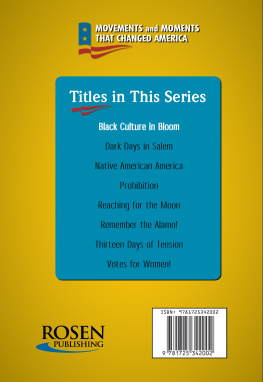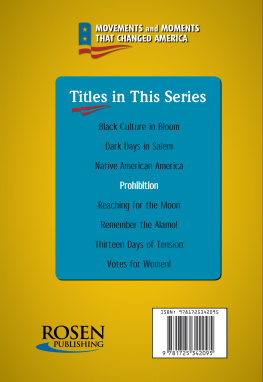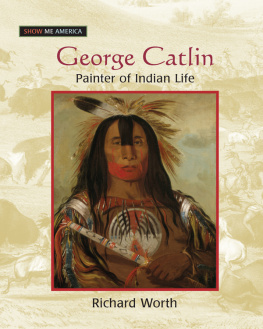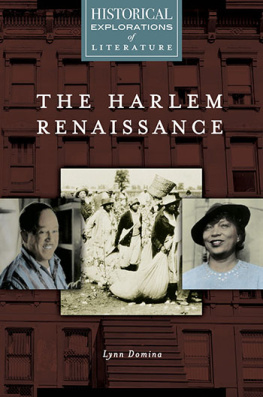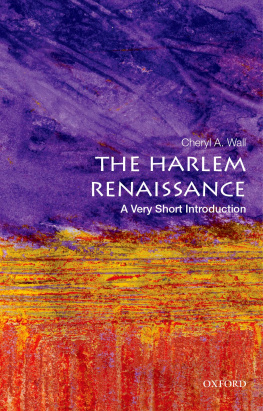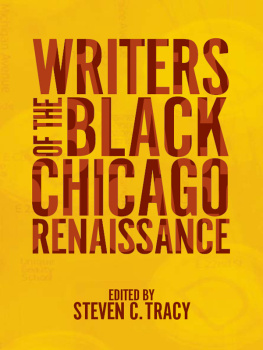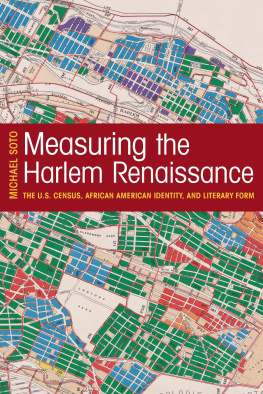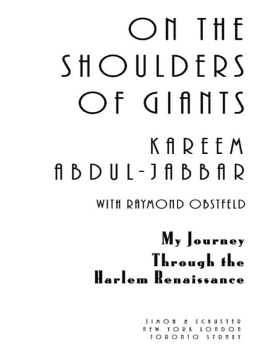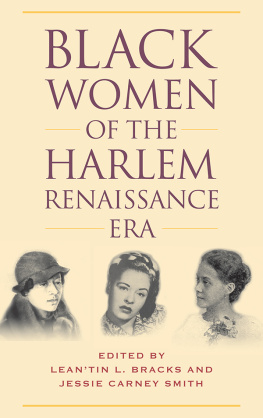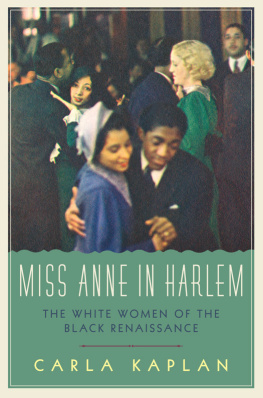
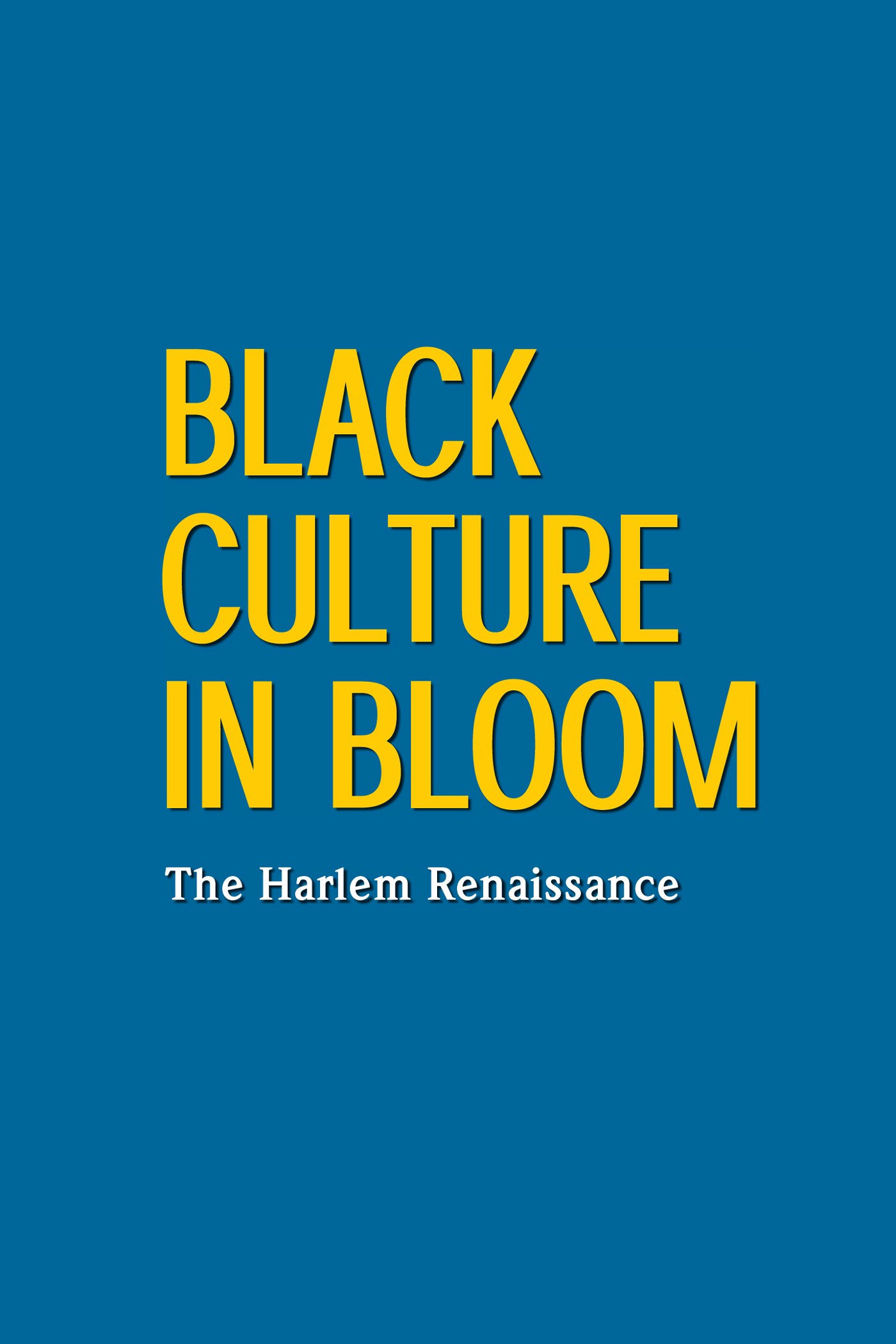
Published in 2021 by The Rosen Publishing Group, Inc.
29 East 21st Street, New York, NY 10010
Copyright 2021 by The Rosen Publishing Group, Inc.
All rights reserved.
No part of this book may be reproduced by any means without the written permission of the publisher.
Library of Congress Cataloging-in-Publication Data
Names: Worth, Richard, author.
Title: Black culture in bloom: the Harlem Renaissance / Richard Worth.
Description: New York: Rosen Publishing, 2021. | Series: Movements and
moments that changed America | Includes bibliographical references and
index. | Audience: Grades 6 to 12.
Identifiers: LCCN 2019006395 | ISBN 9781725342002 (library bound) | ISBN
9781725341999 (pbk.)
Subjects: LCSH: African AmericansIntellectual life20th centuryJuvenile
literature. | Harlem RenaissanceJuvenile literature. | African American
arts20th centuryJuvenile literature. | Harlem (New York,
N.Y.)Intellectual life20th centuryJuvenile literature. | African
AmericansNew York (State)New YorkIntellectual lifeJuvenile
literature. | African American artsNew York (State)New
YorkHistory20th centuryJuvenile literature. | African AmericansNew
York (State)New YorkBiographyJuvenile literature. | New York
(N.Y.)Intellectual life20th centuryJuvenile literature.
Classification: LCC E185.6 .W883 2021 | DDC 974.7/00496073dc23
LC record available at https://lccn.loc.gov/2019006395
Printed in the United States of America
Portions of this book appeared in The Harlem Renaissance: An Explosion of African-American Culture.
Photo Credits: Cover, pp..
CPSIA Compliance Information: Batch #BSR20. For further information contact Rosen Publishing, New York, New York at 1-800-237-9932.

CONTENTS


INTRODUCTION
A renaissance means quite literally a rebirth, usually a rebirth of culture, literature, art, music, and architecture. During the twelfth century, for example, a renaissance occurred in Western Europe. In literature, Geoffrey of Monmouth (c. 1100c. 1155), an English clergyman, wrote stories of King Arthur and his knights of the Roundtable. In France, a professor named Peter Ableard (10791142) became famous for his scholarly investigations, philosophy, and religious writings.
However, the twelfth century renaissance was best known for a new style of architecture. It was called gothic and led to the building of some of Europes most magnificent cathedrals. These included the Cathedral of Notre Dame in Paris and another cathedral at Chartres, France. These and others like them in England and other parts of Europe became famous for their wide open interiors, brilliant stained-glass windows, and soaring church spires.
About two centuries later, another, much broader, renaissance began in Italy. Some of the Italian city-states had become wealthy from trade, and their rulers possessed the money to finance a cultural flowering that marked the beginning of modern Europe. The best known of the Renaissance artists were painters such as Leonardo da Vinci (14521519) and Michelangelo (14751564) in Italy, writers such as Dante (12651321), an Italian, and the English author Geoffrey Chaucer (13431400), as well as great philosophical thinkers such as Erasmus of Rotterdam (c. 14661536) in Holland.
The Renaissance led to a broader understanding of how the human body functions and the human mind thinks. It impelled scientists such as Galileo (15641642), in Italy, to explore the universe with his telescope, and Isaac Newton (16421727), in England, to develop his theories of gravity.
As a result of the Renaissance, European explorers had the courage and the curiosity to travel around Africa to India, while others crossed the Atlantic Ocean to the Americas. In North America, a renaissance began in New England during the early nineteenth century. One historian has called it the Flowering of New England. This was a cultural movement centered around Boston that included great writers such as Nathaniel Hawthorne (18041864) and poets like Henry Wadsworth Longfellow (19071882). Henry David Thoreau (18171862) and Ralph Waldo Emerson (18031882) became famous across the United States for their philosophical writings.
A renaissance can arise from a relatively large region of the world or a very small region in a single country. The Harlem Renaissance arose in a small area of New York City during the 1920s. This was a period of rapid economic growth following the end of World War I. Harlem had become home to many African Americans who had migrated northward from the South. They had escaped severe racial prejudice, violence from white majorities, and economic hardships in pursuit of what they hoped would be a better life in the North. As author and poet Langston Hughes wrote, Harlem was the promised land.
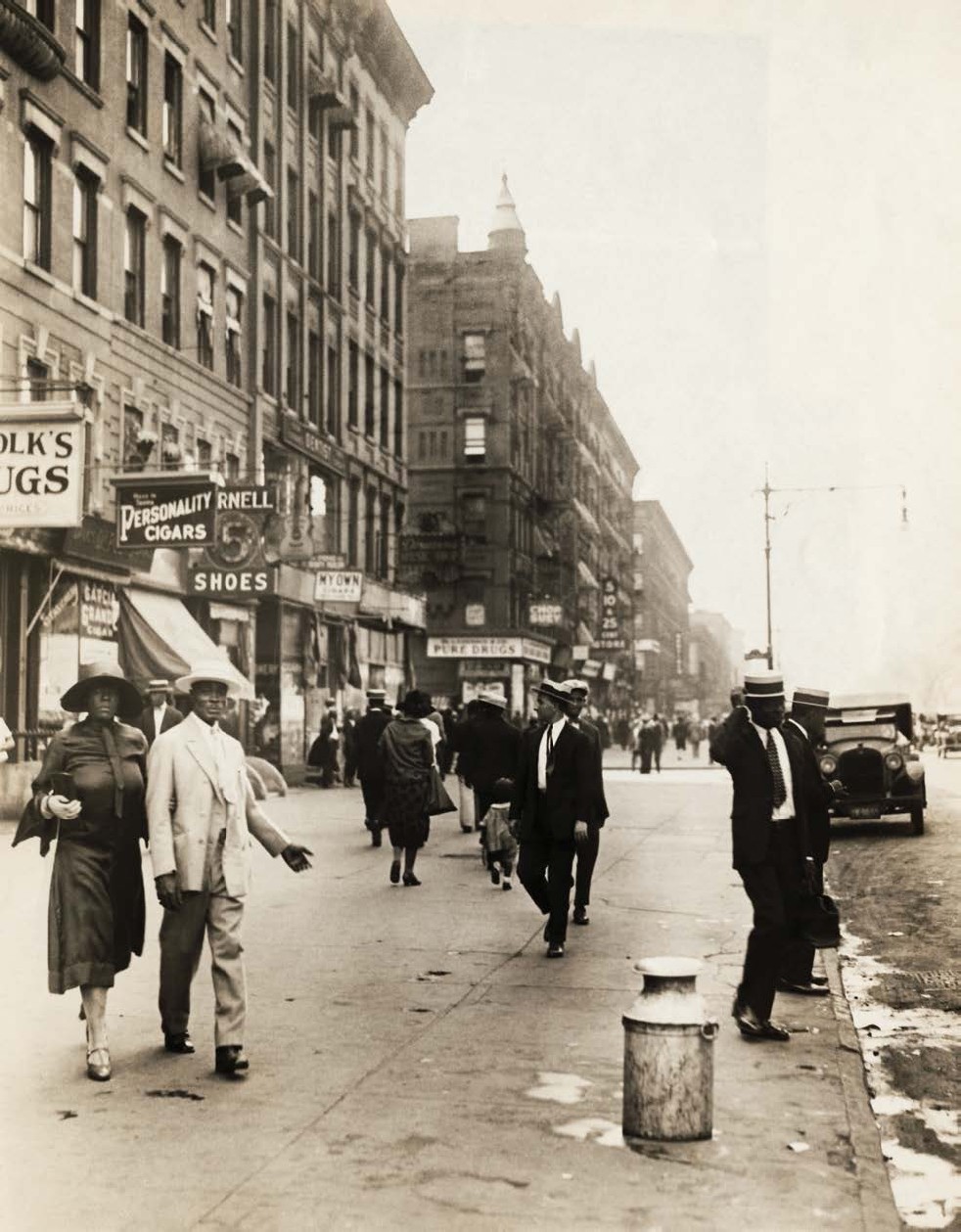
People stroll the streets of 1920s Harlem in New York City. For a decade after World War I, Harlem became the location of a literary, artistic, and musical renaissance unlike any cultural rebirth ever seen before in the United States.
For a brief period between the end of World War I and the beginning of the Great Depression, Harlem experienced a flowering of culture. Jazz, which had originated in the South, took over the Harlem nightclubs. African American writers and poets produced classics in literature, while artists and photographers captured the black experience.
Perhaps, most importantly, the Harlem Renaissance enhanced the self-image of black Americans. For the first time, Harlem writers and artists brought the black experience to the attention of America.
 1
1
HOME TO HARLEM
Henry Johnson was born in 1892 in Winston-Salem, North Carolina. Later, Johnson came north to New York as part of the Great Migration that brought thousands of African Americans out of the South. As a young man, he worked as a chauffer, a porter carrying luggage at a railroad station, and in a coal yard. But in 1917, after the United States declared war against Germany, Johnson enlisted in the army and joined the 15th New York Infantry Regiment.
On January 1, 1918, as a heavy snowstorm battered the coast, Johnsons regiment of African American soldiers landed in France. The regiment came from Harlem, New York. They had struggled through a long voyage across the stormy Atlantic Ocean in a leaky ship for more than six weeks. When they finally arrived in France, the men of the 15th Infantry Regiment, New York Army National Guard, expected to be rushed up to the front lines. World War I had been raging across eastern French soil since 1914. The AlliesBritain, Russia, and Francefaced the veteran soldiers of the Central powers, which included the Austro-Hungarian, German, Ottoman, and Bulgarian empires. Both sides had dug in along 2,000 miles (1,609 kilometers) of trenches that stretched from the North Sea to the Swiss border. Over four years, they had battered and bloodied each other. Each side lost hundreds of thousands of men in a vain attempt to score a knockout victory and win the war.

